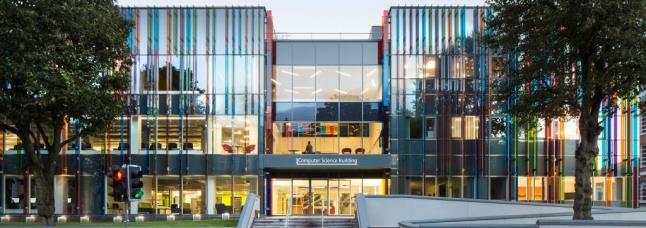
Doran Consulting were appointed as the Civil & Structural Engineers on the refurbishment and extension to the Bernard Crossland Building (BCB), Queen’s University, Belfast.
The new 3000m2 modern landmark building is double in size to the existing BCB, with increased numbers of computing resources, considerably more project space and additional seating/social areas for students. The objective was to create a high-quality transparent building that established a discrete identity for Computer Science, integrating both teaching and research; and to deliver a stimulating environment for staff and students.
The new building offers a variety of large and small computer labs, project spaces, breakout rooms, a Student Hub spanning three floors, academic and clerical offices, and postgraduate spaces.
The original 1970's concrete frame was retained on the north block while the south block and link corridor to the David Keir building were demolished.
A new steel framed extension was designed and constructed to the rear of the north block and extended over the top of the existing concrete frame. A new larger 4 storey south block was also constructed, with an insitu concrete basement under for plant.
The new steel framed construction supports profiled metal deck floor, with insitu topping and insulated flat roofs. It wraps around the existing concrete frame to maintain critial service zone heights throughout the building.
A Continuous Flight Auger piling solution was utilised on the new construction to support the ground beams and structure over. This approach was chosen to limit the noise and vibration during placement in a narrow site, surrounded by sensitive QUB equipment and labs, as well as neighbouring businesses and residential areas.
Refurbishment and alterations to 14 & 16 Malone road were also carried out during the works.
In keeping with the University’s commitment to sustainability, Doran Consulting aided in the design and construction to minimise its impact on the environment and achieved the target of Building Research Establishment Environmental Assessment Method (BREEAM) "Excellent" rating. In 2017 this project won a Structural Award in the Best Medium Project category, from the Institution of Structural Engineers, Northern Ireland.